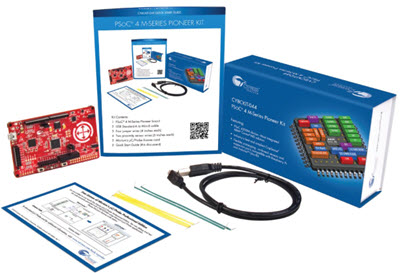|
For novel ideas about building embedded systems (both hardware and firmware), join the 35,000 engineers who subscribe to The Embedded Muse, a free biweekly newsletter. The Muse has no hype and no vendor PR. Click here to subscribe.
|
Microchip's line card is more a telephone book than a card. Like so many other vendors they offer hundreds of variants of their processors. Many sport the same CPU but vary in memory configurations and I/O mixes. That's great news for developers who want just the right peripherals for a particular application.
But their new PIC16F178X parts draw the circle around the microprocessor chip a bit broader than usual. Peripherals (if you can call them that) include up to three op-amps that can be "wired" by setting configuration bits in different ways, as well as up to four analog comparators (which are distinct from the op amps).
The datasheet (http://ww1.microchip.com/downloads/en/DeviceDoc/41579C.pdf) is a bit weak on details. But the gain-bandwidth product has a "typical" spec of 4.3 MHz, which is probably faster than one would need for use with this eight-bit CPU. Interestingly you can set one of two GBWP values, a "high" and a "low," though these levels have not been characterized yet.
Open loop gain is also only given with a "typical" spec but is a 90 dB, and the slew rate is similarly rated at a respectable 3 V/uS.
(Microchip tells me these specs will be fully characterized later this year).
The inputs can go to the part's fixed voltage reference, the output of the DAC, or a pin. Outputs can go to pins and other on-board components, though the datasheet is silent on those connections. However, other material Microchip provided shows them connected to the comparators and the A/D input.
An example application for a three phase motor controller is here: (I especially like the cloud labeled "Firmware Control," as if a little hand-waving will magically generate the software!)
The cost is a little over a buck in volume, and twice that in singles.
The on-board analog is a cool idea that can reduce parts count and improve integration. Op-amps are available on other vendors' products, such as some members of the MAXQ family from Maxim, but to my knowledge this is the first time they have been so tightly integrated onto the CPU, with programmable connections allowing a wide variety of applications.
(On a related note, I came across TI's wonderful Handbook of Operational Amplifier Applications, a free 94 page .PDF available here: www.ti.com/lit/an/sboa092a/sboa092a.pdf.)
Published May 23, 2012


